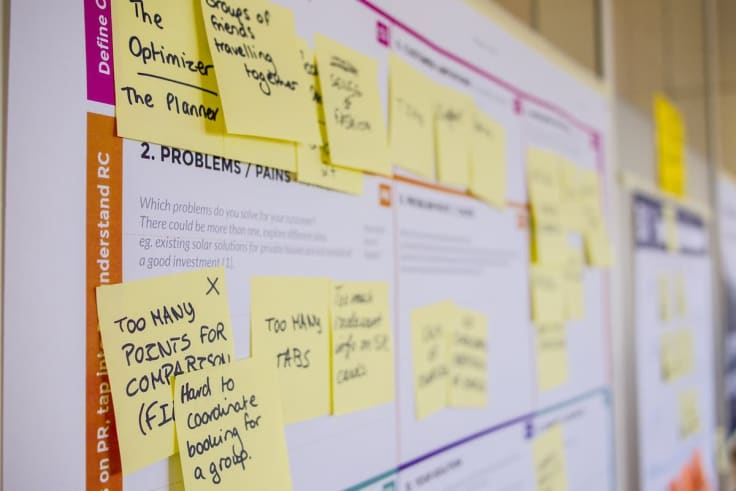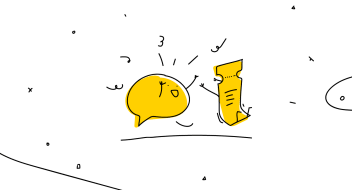Showing top 0 results 0 results found
Showing top 0 results 0 results found

Whether you’re having a friendly debate about the best travel destination, struggling with online communication, or dealing with a complicated issue involving numerous departments and businesses, effective problem-solving requires a clear perspective and a rational action plan.
No matter your purpose, think of the following guide like a GPS, regularly updated to lead you to your destination. While the article concentrates on problem-solving in a business rather than persuading friends, you'll find these effective problem-solving techniques helpful in many other areas.

You’ll learn how to develop a clear perspective, generate effective solutions, evaluate options, and, ultimately, select the best course of action to solve problems. You can customize the steps to fit your unique situation and needs. Let's dive into the ten problem-solving steps to resolve the crisis and achieve your goals.
Ten steps to put out the fire, or problem-solving process
1. Identify the problem
In business and customer service, define the problem to ensure it is well-understood and addressed correctly. It's an absolute must among effective problem solvers, in unusual situations and in the most common customer service problems.
Gathering information from multiple sources and using problem-solving tools such as flowcharts or cause-and-effect diagrams can help identify the underlying causes of the problem. This will result in saving time and resources and improving the outcomes.
Identifying difficulties is among the most desirable problem-solving skills, especially in corporate structures with complex hierarchies and dependencies.
2. Understand the problem
The next step is to understand the underlying reasons for the problem. To do that, you need to gather relevant information and analyze it effectively. Avoiding these reasons or addressing them incorrectly is a surefire way to experience recurring issues and increased dissatisfaction.
By understanding the reasons, you can develop long-term solutions that improve customer satisfaction and lead to overall success. Understanding and finding the cause is undoubtedly one of the underrated problem-solving skills.
3. Identify potential solutions
One of the most crucial aspects is identifying potential and practical solutions. How can you explore different options to come up with the best?
Brainstorming techniques can help generate creative and innovative business and customer service solutions. For example, a company may use brainstorming sessions to develop new product ideas or marketing strategies.
Customer service teams can also use brainstorming techniques to solve common customer complaints, such as long wait times or difficult-to-use interfaces. If you are looking for improvements, especially in this area, you will undoubtedly be interested in essential customer service skills.
Let's assume that you want to use proven brainstorming techniques.

Brainstorming techniques to consider
- Mind mapping: A visual brainstorming technique that involves mapping out ideas and connecting them to related concepts. This technique helps individuals and teams explore all possible options and consider different perspectives to develop unique solutions.
- Reverse brainstorming: A technique that involves thinking of solutions that would make the problem worse instead of better. This technique helps individuals and teams identify potential obstacles and develop strategies to avoid them.
- SWOT analysis: A structured brainstorming technique that analyzes an organization's strengths, weaknesses, opportunities, and threats. This technique helps individuals and teams identify areas for improvement and develop strategies to capitalize on opportunities and minimize hazards.
- Random word association: A technique that involves brainstorming ideas by randomly associating words with the problem. This technique helps individuals and teams break their usual thinking patterns and generate new and creative ideas.
- Role-playing: A technique that involves acting out different scenarios and perspectives related to the problem. This technique helps individuals and teams better understand the problem and develop empathy for the customer or stakeholders involved.
Unconventional techniques to consider
- SCAMPER (Substitute, Combine, Adapt, Modify, Put to another use, Eliminate, and Reverse) - This technique encourages people to think outside the box and consider unconventional ways to approach a problem.
- Design thinking - This problem-solving approach puts the customer's needs and experiences at the forefront. It involves empathizing with the customer, defining the problem, ideating potential solutions, prototyping, and testing to refine the solution.
- Lateral thinking - This problem-solving technique encourages people to approach problems from different angles and perspectives. It involves breaking down assumptions and challenging traditional thinking methods to arrive at unexpected solutions.
Consider all possible options, including unconventional ones, to find problem-solving techniques that address the current problem and prevent similar issues in the future.
4. Evaluate potential solutions
Once you have identified potential solutions, focus on the most feasible, impactful, and effective option. How do you sift through them?
Evaluating potential solutions involves analyzing the advantages and disadvantages of each option, considering the resources required, and assessing the potential impact on the organization or customers.
What are the most popular ways? Techniques such as cost-benefit analysis, risk analysis, and decision matrix can effectively help evaluate possible solutions.
5. Select the best solution
Techniques for selecting the best solution involve revisiting the evaluation criteria, weighing the advantages and disadvantages of each option, and selecting the option that best meets the requirements.
Additionally, you can seek customer feedback. Stakeholders can provide valuable insights into choosing the best solution to solve problems.
By choosing the best solution that aligns with the organization's goals, meets the customers' needs, and can be implemented using the available resources, you can address problems effectively and efficiently, leading to improved outcomes.
This translates into achieving organizational goals, meeting customer needs, enhancing customer satisfaction, increasing productivity, reducing costs, improving efficiency, effective communication, and more.
6. Develop an action plan
Techniques for developing an action plan involve breaking down the solution into manageable tasks, setting clear timelines, assigning responsibilities, and identifying the resources required for implementation. Also, involve stakeholders in the action plan's development to get their support for the solution's success.

7. Implement the solution
After developing a detailed action plan, communicate it clearly and implement the solution effectively. This is likely one of the most desirable problem-solving skills.
To do so, allocate resources, assign responsibilities, and ensure all stakeholders understand their roles. Additionally, monitoring progress and addressing any issues that appear during the implementation can ensure the solution is implemented successfully.
8. Monitor and evaluate progress
Collecting and analyzing data is vital to assess the solution's effectiveness and determine if any adjustments are needed. This process involves regularly tracking key performance indicators and using customer and stakeholder feedback.
The latter offers valuable insights that help pinpoint opportunities for enhancement and make informed decisions.
By monitoring progress and evaluating results, individuals and organizations can ensure the implemented solution is efficient and sustainable over the long term.
This step also provides an opportunity to learn from experience and adjust as needed to achieve continuous improvement.
9. Learn from experience
The knowledge gathered throughout the process is key to learning from mistakes. It's also vital to reflect on the problem-solving process and identify what worked well and could be improved.
By analyzing the process, identifying areas for improvement, and implementing changes, you ensure that future problem-solving efforts are more effective.
Documenting the problem-solving process can also provide a reference for future efforts that individuals and organizations will face.
10. Standardize and sustain
If you've already collected the champagne corks and are sweeping up the last bits of confetti, it's worth remembering one last step.
To ensure that the problem does not reoccur and that the solution becomes standard practice for the organization, establish a standardized approach and maintain it over the long term.

The organization should document a working solution and create a standard operating procedure (SOP) outlining the necessary steps to establish the action key.
By doing so, every organization member will have a clear understanding of the required steps and how to execute them.
To sustain the solution, the organization should continue to monitor progress and evaluate results over time. This helps identify potential issues or areas for improvement and ensures that the solution remains effective over the long term.
In the ideal scenario, the organization should also provide ongoing training and support to ensure everyone is well-equipped with the problem-solving skills and knowledge to implement "the cure."
Conclusion
Practical problem-solving is an ongoing continuous improvement process, and remember that the problem may reoccur in the future.
Don’t strive for the perfect solution from the start, and embrace the issues that come along the way since they provide valuable learning opportunities.
Instead, maintain an attitude of perseverance and focus on finding solutions to new challenges as they arise, which can help you save time and reduce stress.
By adopting this mindset, you'll be better equipped to tackle any problem that comes your way. Good luck with your problem-solving endeavors!
Get a glimpse into the future of business communication with digital natives.
Get the FREE report







Comments